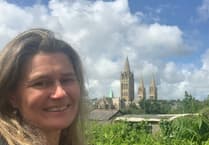AS towns and cities grow, it’s often nature that gets squeezed out. Just look at London: centuries of expansion have replaced forests, marshes and meadows with motorways, housing blocks and high streets. The noises of nature — birdsong, buzzing bees, rustling leaves — have slowly been drowned out by the sounds of the city — sirens, engines and endless foot traffic.
Now, Cornwall could be facing a similar future. With new national planning laws aiming to build 1.5-million homes by 2029, even protected countryside is under pressure. While the need for housing is real — over 22,000 households are currently on the Homechoice register in Cornwall — so is the risk of damaging what makes the area special.
In rural areas, wildlife thrives. One hedgerow in the Cornish countryside might support hundreds of species, from birds and bats to butterflies and fungi. Compare that to a typical urban street, where non-human life is often limited to pigeons, rats and the occasional fox. The difference in biodiversity is stark — and once these habitats are gone, they’re incredibly hard to bring back.
While we urgently need more affordable places to live, we also need to think carefully about where and how we build.
Thankfully, Cornwall Council has taken steps to help. New developments must deliver a 10 per cent “biodiversity net gain’”, meaning builders are required to leave the land in better shape than they found it. It’s a hopeful step toward protecting the countryside even as the population grows.
But tensions remain. People are rightly concerned about solar farms swallowing fields or housing estates edging into quiet villages. They don’t want to lose the noises of nature that define rural life.
However, if we listen to the land and learn from London’s past, it’s still possible to build homes and protect the wild heart of Cornwall.
CASA (Climate Action St Austell)




